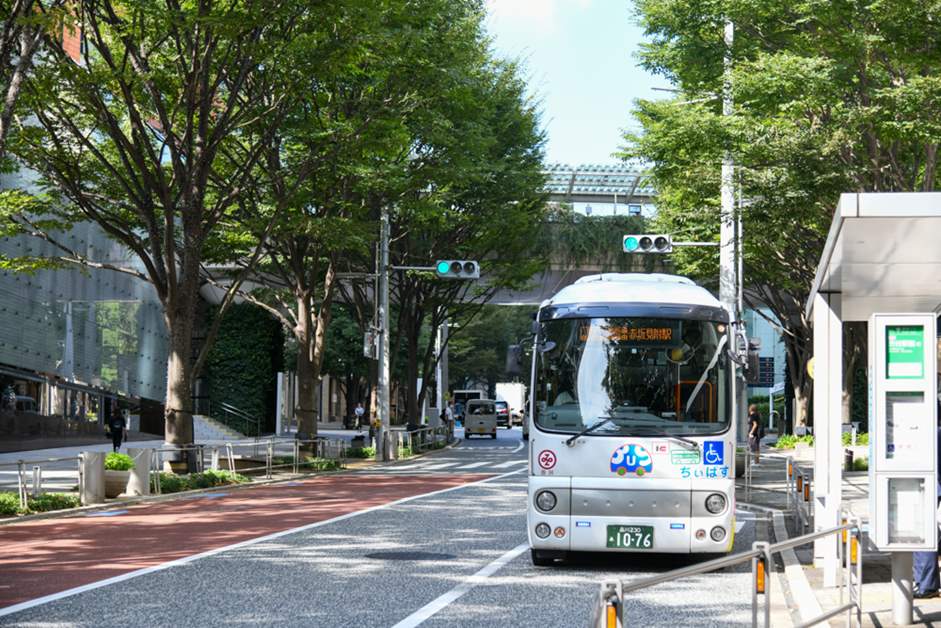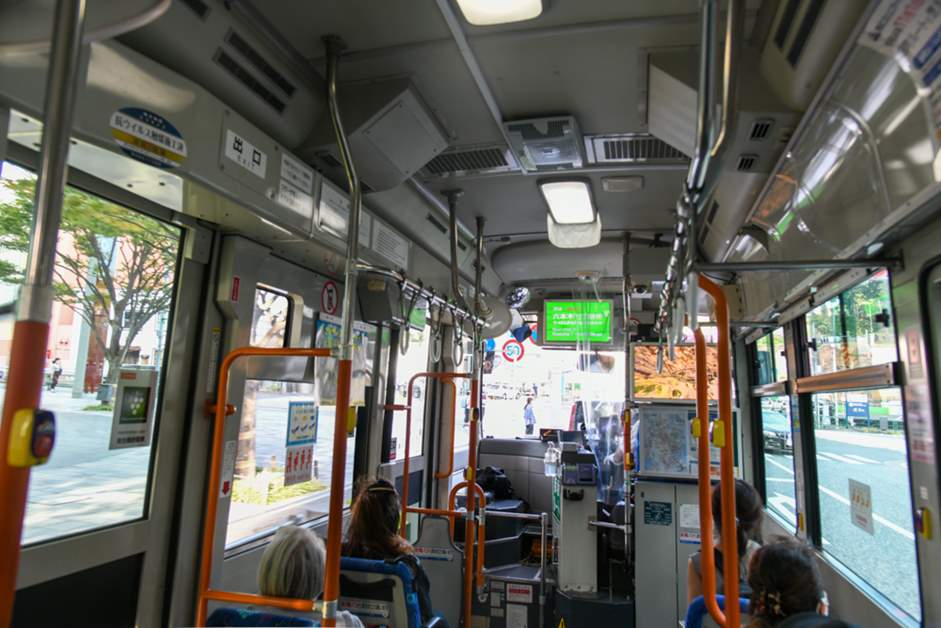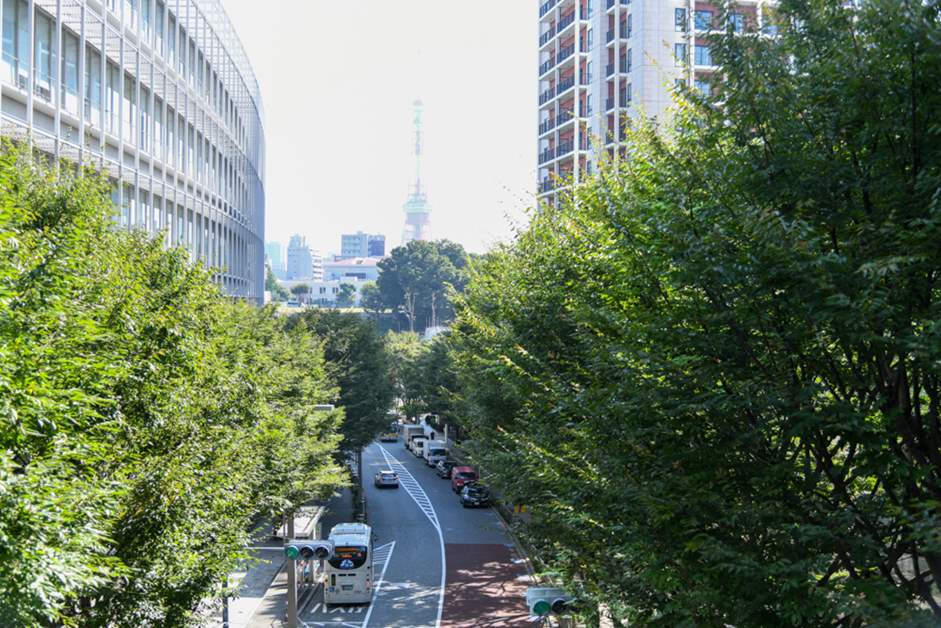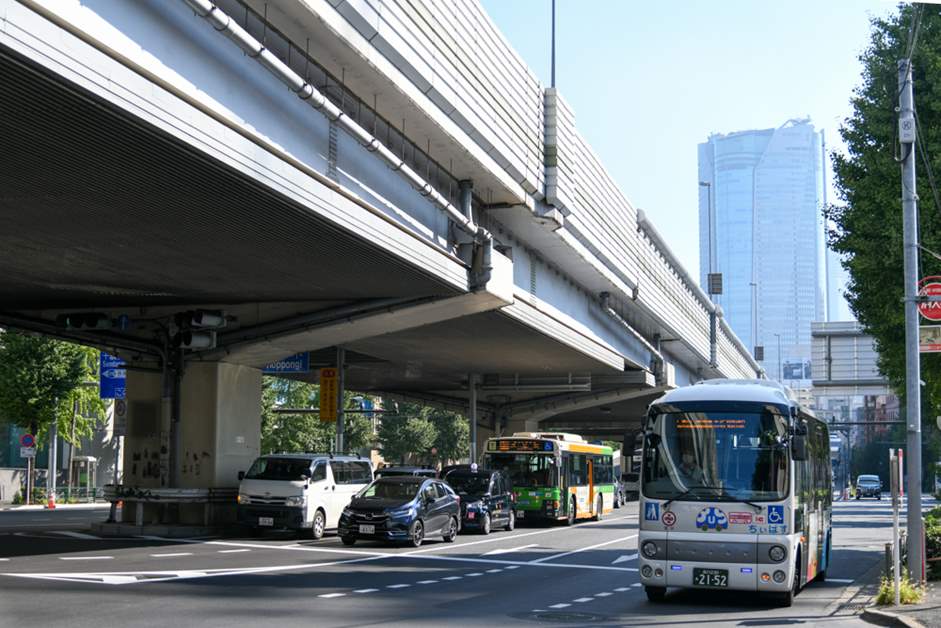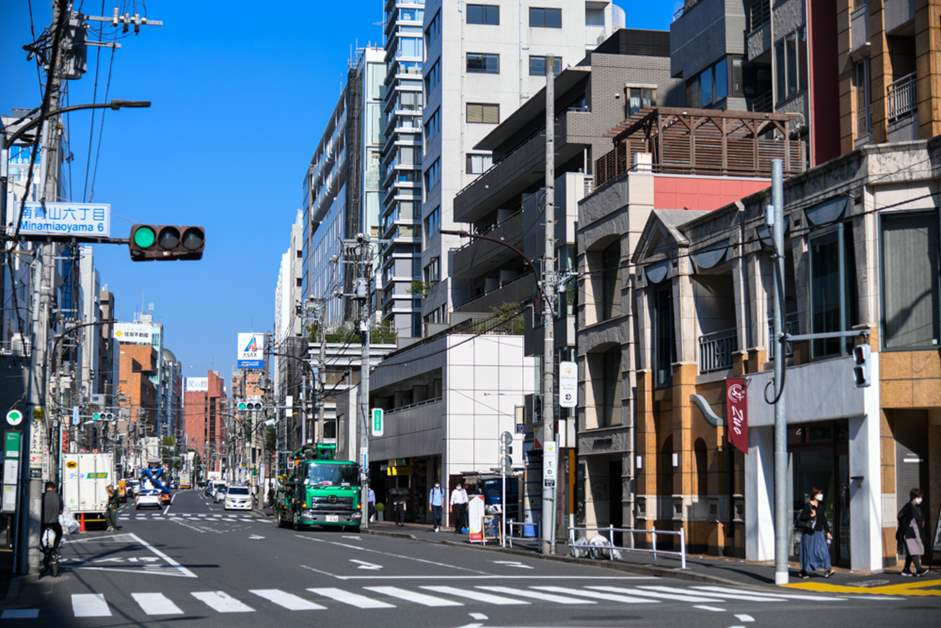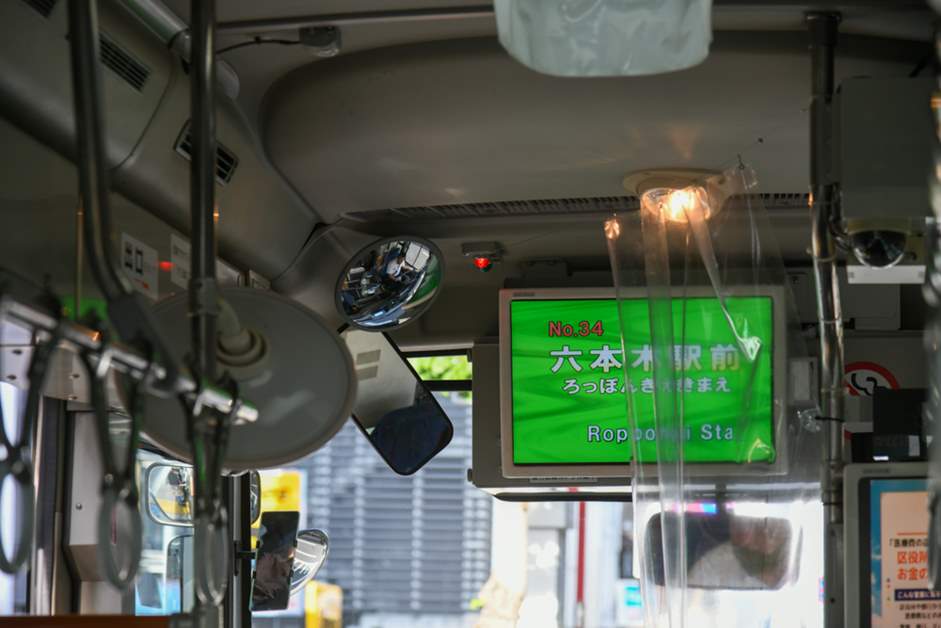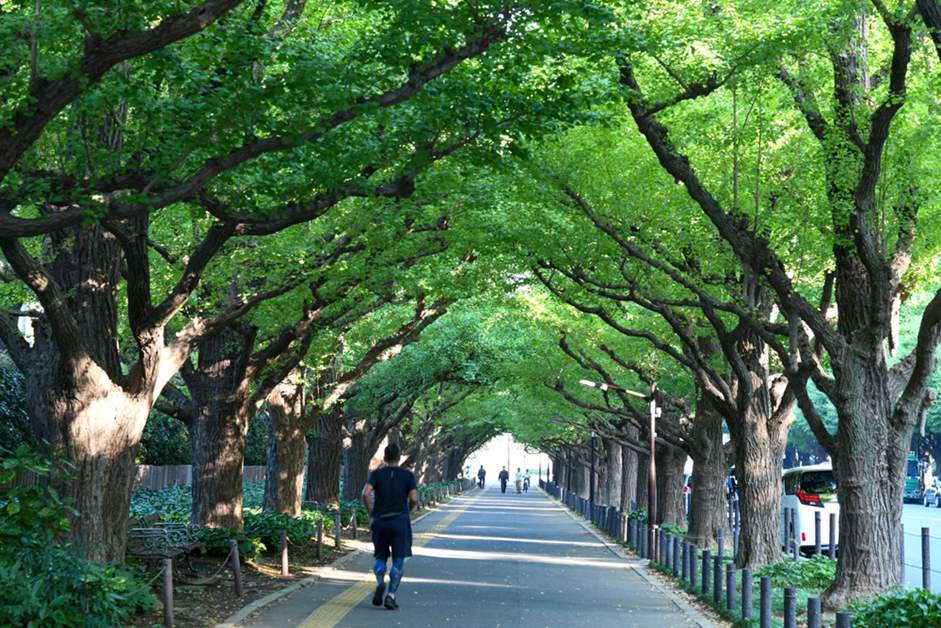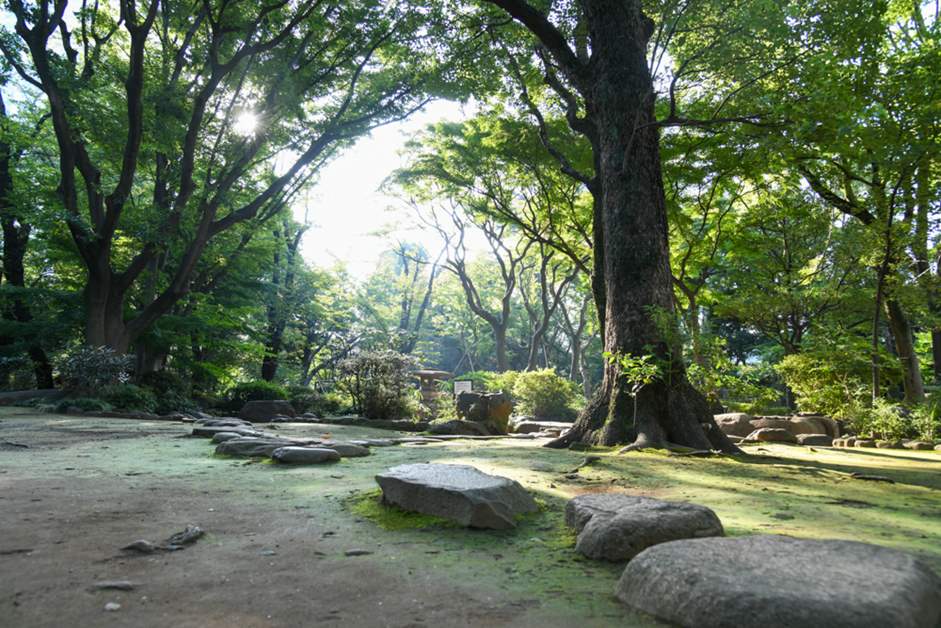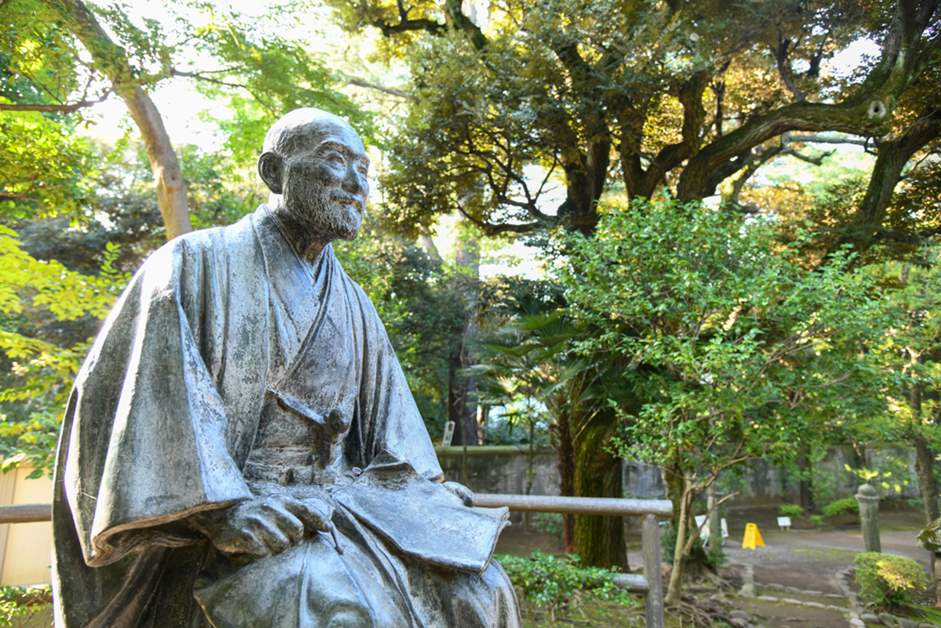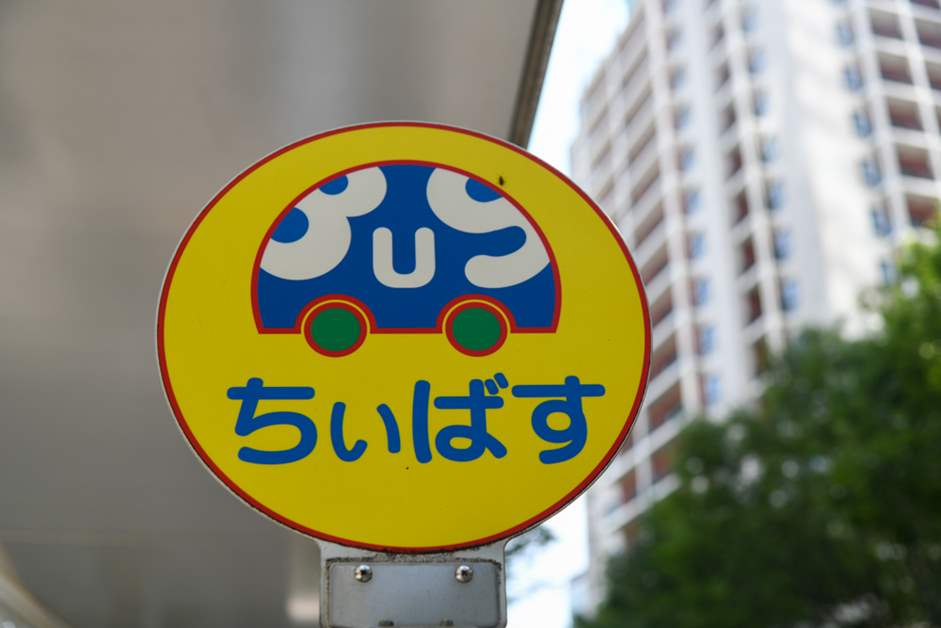A one-day pass for the Minato City Community Bus "Chi-Bus", a stopover trip from Roppongi Hills to Aoyama to Akasaka-mitsuke.
When you walk around Minato City, you often see a little white bus. This bus is called "Chii Bus," a Minato City community bus. When you hear the term "community bus," you may think of it as a "citizen's footstep" for daily life, but Chi-Bus is also convenient for sightseeing purposes. Moreover, the fare is 100 yen per ride no matter where you get on and off, and a one-day pass allows unlimited rides for 500 yen, which is a little more economical than other transportation systems. This time, I would like to take a short trip in Minato City by Chii Bus.
Eight routes stretching throughout the port area
Chi-Bus" operates on eight routes: the Tamachi Route, Akasaka Route, Shiba Route, Azabu East Route, Azabu West Route, Aoyama Route, Takanawa Route, and Shibaura Konan Route. The "Chii Bus" is marked by the logo of the word "BUS" in blue letters, which was selected from among publicly solicited applications. Four types of buses, illustrated by elementary and junior high school students in Minato City, and two types of EV buses, for a total of six types, are running.
◎Click here for Chii Bus route map
https://www.fujiexpress.co.jp/chiibus/map/chi_bus_chizu_ol.pdf
There are more than 200 stops along the entire route, and the fare is 100 yen per ride no matter where you get on or off (the second preschool child accompanying a passenger of school age or older rides for free). Moreover, a one-day pass, which is shared with the Odaiba Rainbow Bus from Shinagawa Station to Odaiba, costs only 500 yen and allows unlimited rides, making it a very wallet-friendly means of transportation.
Three of the eight routes depart from or arrive at Roppongi Hills. This time, I chose the "Aoyama Route" among them to enjoy a stopover trip.
◎Click here for Chii Bus route map
https://www.fujiexpress.co.jp/chiibus/map/chi_bus_chizu_ol.pdf
There are more than 200 stops along the entire route, and the fare is 100 yen per ride no matter where you get on or off (the second preschool child accompanying a passenger of school age or older rides for free). Moreover, a one-day pass, which is shared with the Odaiba Rainbow Bus from Shinagawa Station to Odaiba, costs only 500 yen and allows unlimited rides, making it a very wallet-friendly means of transportation.
Three of the eight routes depart from or arrive at Roppongi Hills. This time, I chose the "Aoyama Route" among them to enjoy a stopover trip.
Cute wrapped "Chi-Bus" with illustrations by elementary school students in the ward
The Aoyama Route is a 42-43 minute route that departs from the bus stop on the first floor of Roppongi Hills Mori Tower and goes to the stop in front of Akasaka-mitsuke Station, running every 20 minutes from 7:00 to 20:00, or you can take the reverse route back to Roppongi Hills.
While waiting at a bus stop with a bench, a bus a little smaller than a local bus came in. It was very cute with a heartwarming illustration on the side of the body. We boarded the bus together with people who seemed to be on their way home from shopping. As soon as we departed, we were soon on Roppongi Keyakizaka, with a refreshing view of the tree-lined avenue spreading out before us.
The bus heads toward Minami Aoyama, passing through Nishiazabu with Roppongi Hills in the background. The bus stops at "Minami Aoyama 6-chome" and gets off at the first stop.
The Kotto Dori neighborhood, where this bus stop is located, is an area where fashionable cafes and general merchandise stores are concentrated, and at the same time, it is dotted with a variety of art spots.
The Nezu Museum of Art, which holds a variety of special exhibitions of Japanese and Oriental art throughout the year, the Taro Okamoto Memorial Museum, which is located in the renovated studio and residence of the painter Taro Okamoto, the Yok Mok Museum, which houses a collection of Picasso's valuable ceramic works, and the Shotaro Akiyama Museum of Photography, which is located in the renovated studio of photographer Shotaro Akiyama, are all located nearby.
From this area, Omotesando is within walking distance. I enjoy window shopping on Miyuki-dori, a brand street, and take a quick stroll. While I was there, I saw Chi-isu passing me and running down the tree-lined avenue.
(DATA)
yokumoku museum
https://yokumokumuseum.com
For more information on the Taro Okamoto Memorial Museum, click here.
Let's receive the passionate power of Taro Okamoto, an artist genius, at "Taro Okamoto Memorial Museum"!
https://visit-minato-city.tokyo/ja-jp/articles/427
yokumoku museum
https://yokumokumuseum.com
For more information on the Taro Okamoto Memorial Museum, click here.
Let's receive the passionate power of Taro Okamoto, an artist genius, at "Taro Okamoto Memorial Museum"!
https://visit-minato-city.tokyo/ja-jp/articles/427
A popular spot for viewing the autumn leaves and a place associated with a legendary politician who laid the foundation of the Japanese economy
After enjoying shopping and dining in Omotesando, take the Chii Bus again from the Omotesando Station bus stop and continue toward Akasaka on the wide arterial road of Aoyama-dori. On the way, you will see a view of Stadium Street with a large signboard depicting the Yakult Swallows players standing in the window on the left side of the car. In addition, in-train announcements are available in English, and the in-train monitor displays in English, Chinese, and Korean as well, so foreign tourists can use the bus with peace of mind.
And when you get off at the "Aoyama 2-chome Intersection," you are right in front of the "Meiji Jingu Gaien Icho Namiki," one of Minato City's most famous landmarks. On the green-arched sidewalk, you will see runners and dog walkers throughout the day.
The tree-lined avenue is an especially popular point of interest when the leaves change color. In addition to cafes with terraces, there are benches in the middle of the walkway, making it a great place to rest between trips. Also nearby is the Meiji Kinenkan, a historical building associated with the Emperor and now popular as a wedding hall, so having lunch in the garden here is also a good option.
For more information about Meiji Kinenkan, click here.
Video article] Visit Meiji Jingu Gaien with sightseeing of autumn foliage along the Icho Namiki trees! Experience a garden lunch at "Meiji Kinenkan" in Motoakasaka
https://visit-minato-city.tokyo/ja-jp/articles/436
You can take the Chi-Bus to Akasaka again, but before that, we would like to introduce you to a relaxing spot just a little bit further away from here.
The "Memorial Park for Mr. Korekiyo Takahashi," where he served as Governor of the Bank of Japan, Minister of Finance, and Prime Minister from the end of the Meiji Era to the beginning of the Showa Era.
The park was built on the site of the former residence of Korekiyo Takahashi, a politician who served as Governor of the Bank of Japan, Minister of Finance, and Prime Minister from the late Meiji Era to the early Showa Era, and made great achievements, especially in the fields of economics and finance. It is also a historical spot that was the site of the 2.26 Incident that took place in 1936.
Video article] Visit Meiji Jingu Gaien with sightseeing of autumn foliage along the Icho Namiki trees! Experience a garden lunch at "Meiji Kinenkan" in Motoakasaka
https://visit-minato-city.tokyo/ja-jp/articles/436
You can take the Chi-Bus to Akasaka again, but before that, we would like to introduce you to a relaxing spot just a little bit further away from here.
The "Memorial Park for Mr. Korekiyo Takahashi," where he served as Governor of the Bank of Japan, Minister of Finance, and Prime Minister from the end of the Meiji Era to the beginning of the Showa Era.
The park was built on the site of the former residence of Korekiyo Takahashi, a politician who served as Governor of the Bank of Japan, Minister of Finance, and Prime Minister from the late Meiji Era to the early Showa Era, and made great achievements, especially in the fields of economics and finance. It is also a historical spot that was the site of the 2.26 Incident that took place in 1936.
From the view along Aoyama-dori, the park looks ordinary with playground equipment and benches, but once you step into the back, you will find a pond with a stone bridge and a Japanese garden-like landscape dotted with stone lanterns and stone monuments.
The scenery spread out on the cobblestone pavement is so photogenic that you may forget that you are in the heart of the city. Like Meiji Jingu Gaien Ginko Namiki, this is also a spot with beautiful autumn leaves, and in early summer the hydrangeas are at their best. At the far end of the park stands a dignified statue of Korekiyo Takahashi, so why not take a commemorative photo with the gentle face of Korekiyo and ponder the history that has accumulated in this area?
In addition, in this neighborhood of automakers' showrooms, you can also drop by Honda Welcome Plaza Aoyama, which features Honda's latest cars and a collaborative cafe.
For more information about Honda Welcome Plaza Aoyama, click here.
Recommended rainy day sightseeing spots in Minato Ward, Tokyo, where you can go almost without getting wet from the station.
https://visit-minato-city.tokyo/ja-jp/articles/414
Recommended rainy day sightseeing spots in Minato Ward, Tokyo, where you can go almost without getting wet from the station.
https://visit-minato-city.tokyo/ja-jp/articles/414
At the end of the trip, visit a famous temple where countless foxes are waiting for you.
Then get off the bus at "Toyokawa Inari-mae", one stop before "Akasaka-mitsuke" station, the last stop, and go to "Toyokawa Inari Tokyo Betsuin".
This temple is a branch temple of Toyokawa Inari located in Aichi Prefecture, and is a "fox world" with statues of foxes everywhere. The temple is a "fox world" with statues of foxes everywhere. The temple grounds are home to a variety of Buddhist deities that bring good fortune, such as prosperity, fortune, and protection from fate, so why not make a wish at the end of your trip?
For more information about Toyokawa Inari Tokyo Betsuin, please visit
https://visit-minato-city.tokyo/ja-jp/articles/473
A 10-minute walk from Toyokawa Inari Tokyo Betsuin will take you to the final stop, Akasaka-mitsuke Station. If you are still looking for more fun, you can change here to the "Akasaka Route" and return to Roppongi Hills, taking a side trip along a different route from the one you came in on.
Chii Bus routes cover the entire Minato City, so the more you use your one-day pass, the more you can enjoy sightseeing in Minato City at a reasonable price. For more detailed information, please visit the official website of "Chii Bus".
Chi-Bus" official website
https://www.fujiexpress.co.jp/chiibus/map/
For more information about Toyokawa Inari Tokyo Betsuin, please visit
https://visit-minato-city.tokyo/ja-jp/articles/473
A 10-minute walk from Toyokawa Inari Tokyo Betsuin will take you to the final stop, Akasaka-mitsuke Station. If you are still looking for more fun, you can change here to the "Akasaka Route" and return to Roppongi Hills, taking a side trip along a different route from the one you came in on.
Chii Bus routes cover the entire Minato City, so the more you use your one-day pass, the more you can enjoy sightseeing in Minato City at a reasonable price. For more detailed information, please visit the official website of "Chii Bus".
Chi-Bus" official website
https://www.fujiexpress.co.jp/chiibus/map/




